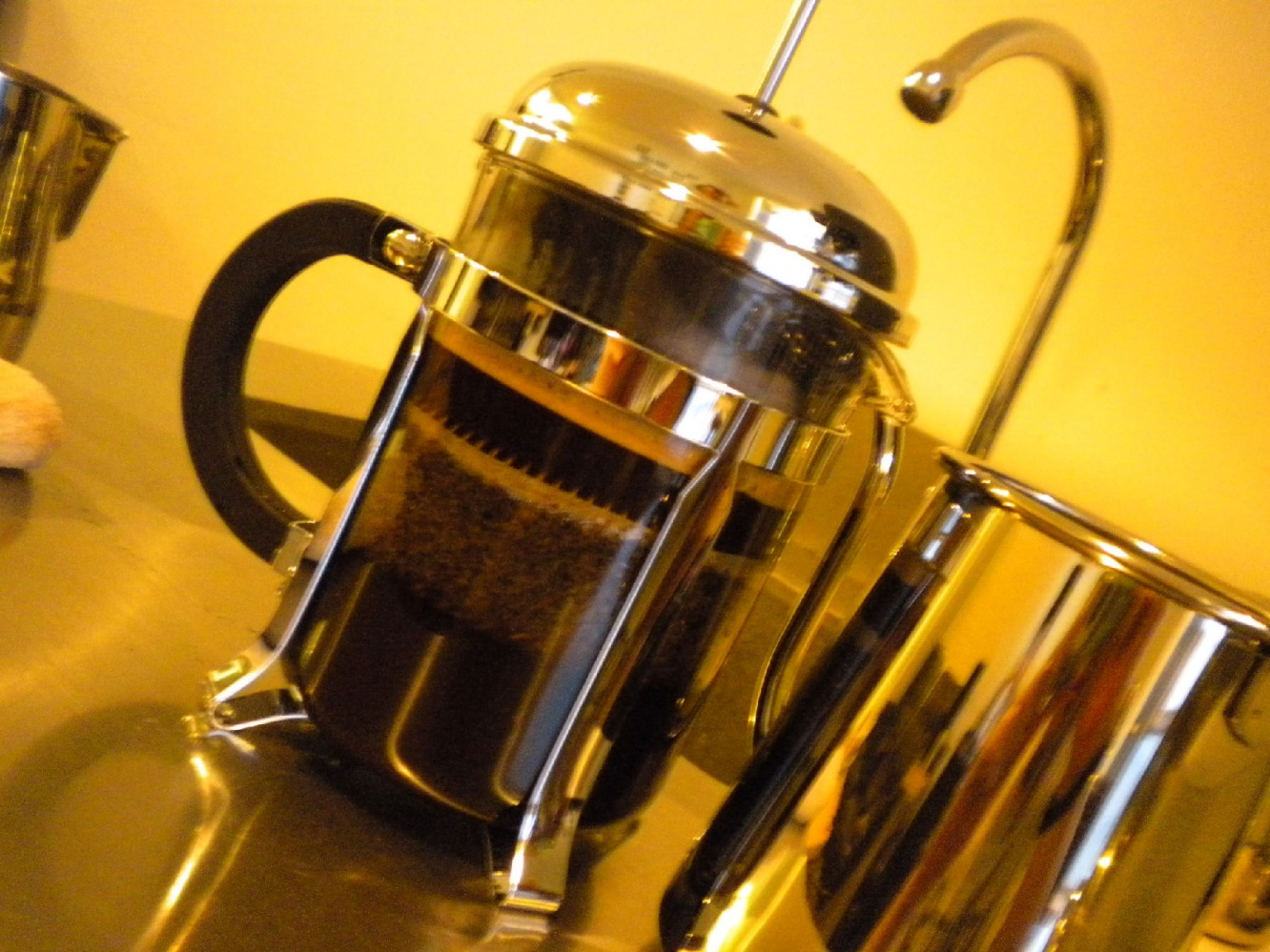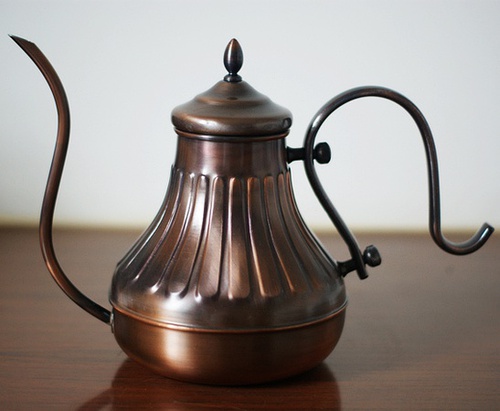The ratio of coffee to water (gold cup extraction criterion: Gold Cup Brewing Principle)
(source: google)
Standard brewing ratio (Standard Brewing Ratio)
Number of cups of coffee
Cups of
Coffee
The amount of coffee used COFFEE TO BE USED
Water consumption WATER TO BE USED
By weight
BY WEIGHT
Meter by measuring tool
BY MEASURE
Ounce Ounces
Gram Grams
Teaspoon Tea
Spoons
Spoon Table
Spoons
Cup Cups
Coffee liquid (oz)
Fluid
Ounces
Number of cups Cups
Pint Pints
Quart Quarts
One GAL, two gallons, two gallons.
Ml CCs
(milliliters)
L Liters
1
0.38
10.6
6
2
1/8
8
1
1/2
1/4
1/8
237
0.24
2
0.75
21.3
12
4
1/4
16
2
1
1/2
1/4
473
0.47
3
1.13
31.9
18
6
3/8
24
3
1 1/2
3/4
3/8
710
0.71
4
1.50
42.5
24
8
1/2
32
4
2
1
1/2
947
0.95
5
1.88
53.2
30
10
5/8
40
5
2 1/2
1 1/4
5/8
1183
1.18
6
2.25
63.8
36
12
3/4
48
6
3
1 1/2
3/4
1420
1.42
7
2.63
74.4
42
14
7/8
56
7
3 1/2
1 3/4
7/8
1656
1.66
8
3.00
85.1
48
16
1
64
8
4
2
1
1893
1.89
9
3.38
95.7
54
18
1 1/8
72
9
4 1/2
2 1/4
1 1/8
2130
2.13
10
3.75
106.3
60
20
1 1/4
80
10
5
2 1/2
1 1/4
2366
2.37
11
4.13
116.9
66
22
1 3/8
88
11
5 1/2
2 3/4
1 3/8
2603
2.60
12
4.50
127.6
72
24
1 1/2
96
12
6
3
1 1/2
2840
2.84
If you know the amount of coffee powder, multiplied by the coefficient 21.33, you know how many ounces of water you need (0.046875 is the inverse coefficient), multiplied by the coefficient 22.2593, you get how many milliliters of water you need (0.04493 is the inverse coefficient).
For example, if you have 1.2oz coffee powder, multiply it by 21.33g, you will need 25.6oz water; 92.6g coffee powder will need 2061CCs water. The amount of coffee powder required can be obtained by multiplying the inverse coefficient with the known amount of water.
Cups of
Coffee
The amount of coffee used COFFEE TO BE USED
Water consumption WATER TO BE USED
BY WEIGHT
BY MEASURE
Ounces
Grams
Tea
Spoons
Table
Spoons
Cups
Fluid
Ounces
Cups
Pints
Quarts
1/2 Gal
CCs
(milliliters)
Liters
one
0.38
10.6
six
two
1/8
six
3/4
3/8
3/16
3/32
one hundred and seventy seven
0.18
two
0.75
21.3
twelve
four
1/4
twelve
1 1/2
3/4
3/8
3/16
three hundred and fifty five
0.35
three
1.13
31.9
eighteen
six
3/8
eighteen
2 1/4
1 1/8
9/16
9/32
five hundred and thirty two
0.53
four
1.50
42.5
twenty-four
eight
1/2
twenty-four
three
1 1/2
3/4
3/8
seven hundred and ten
0.71
five
1.88
53.2
thirty
ten
5/8
thirty
3 3/4
1 7/8
15/16
15/32
eight hundred and eighty seven
0.89
six
2.25
63.8
thirty-six
twelve
3/4
thirty-six
4 1/2
2 1/4
1 1/8
9/16
1065
1.06
seven
2.63
74.4
forty-two
fourteen
7/8
forty-two
5 1/4
2 5/8
1 5/16
21/32
1242
1.24
eight
3.00
85.1
forty-eight
sixteen
one
forty-eight
six
three
1 1/2
3/4
1420
1.42
nine
3.38
95.7
fifty-four
eighteen
1 1/8
fifty-four
6 3/4
3 3/8
1 11/16
27/32
1597
1.60
ten
3.75
106.3
sixty
twenty
1 1/4
sixty
7 1/2
3 3/4
1 7/8
15/16
1775
1.77
eleven
4.13
116.9
sixty-six
twenty-two
1 3/8
sixty-six
8 1/4
4 1/8
2 1/16
1 1/32
1952
1.95
twelve
4.50
127.6
seventy-two
twenty-four
1 1/2
seventy-two
nine
4 1/2
2 1/4
1 1/8
2130
2.13
If you know the amount of coffee powder, times the coefficient 16, you know how many ounces of water you need (0.0625 is the inverse coefficient), multiplied by the coefficient 16.6945, you get how many milliliters of water you need (0.04493 is the inverse coefficient).
For example, if you have 1.2oz coffee powder multiplied by 16.0, you need 19.2oz water; 92.6g coffee powder requires 1562CCs (1.56L) water. The amount of coffee powder required can be obtained by multiplying the inverse coefficient with the known amount of water.
Comparing the two tables, it is not difficult to find that the so-called brewing of enthusiasts is just a little higher in concentration and heavier in taste.
To put it simply, under normal circumstances, one serving of powder (10 grams) is washed into about 22 parts (220 grams) of water, while enthusiasts use one part of powder (10 grams) to flush about 160,17 parts of water (160,170g water).
The picture below is the coffee brewing rate chart of SCAA. If you have the TDS gadget and find that the value of coffee is within the yellow box in the middle of the table below, the coffee wine is relatively balanced and delicious. In this table, the Abscissa is the coffee extraction rate, that is, the ratio of the coffee ingredients extracted from the coffee beans (powder) to the coffee beans (portions). The ordinate represents the ratio of the extracted coffee ingredients (special hint: this is not the weight of the coffee powder) to the total coffee liquid, also known as concentration. The conclusion of SCAA's long-term observation and research is that when the extraction rate of coffee is 180.22% and the concentration is 1.15 ~ 1.35% (that is, the range of yellow box), the taste of coffee is the best (balanced and delicious).
(source: scaa.org)
The above data need special equipment to test, but as long as we pay attention to a few points, the test data of the coffee is basically within the above range.
1. The ratio of coffee powder to water used (1) 15: 20, usually trial-made at 1:18, adjusted according to the taste.)
two。 The thickness of coffee grinding (sugar thickness, about 0.86 mm)
two。 The contact time between coffee and water (the soaking time of coffee powder in water is about three minutes)
4. The temperature of the water (92-96 degrees).
See: gold cup extraction and master frequency
Source: Blackbearcoffee compilation: Huang Wei reprint must indicate the source and the original link
[supplement of December 2, 2012]:
The gold cup extraction criterion of dripping coffee is summarized and summarized on the basis of long-term practice. In the field of coffee, the research of SCAE and SCAA is the most thorough and authoritative. Therefore, for a layman like me who lacks the spirit, ability and conditions to delve into it, borrowlism is the simplest solution. The so-called "golden cup extraction criterion" is basically the content of the red font above. It's not hard to remember. Looking back at this blog post, you only need to look at the red font section.
Other reference materials:
The SCAE Gold Cup Programme:
The Gold Cup Programme is an European drive by the SCAE to improve the standard of filter coffee consumed in the marketplace. It ensures a WIN for the Coffee Roaster, a WIN for the Restaurateur and a WIN for the consumer.
SCAE Gold Cup = Win-Win-Win
The SCAE's Gold Cup programme promotes a better, measurable standard in filter coffee. This will be achieved by recognising an internationally respected set of rules on brewing filter coffee.
The Gold Cup sets minimum standards for coffee to water ratio, brewing temperature and holding time, and optimum standards for coffee extraction and strength.
How the Gold Cup works:
The SCAE Gold Cup uses the industry to monitor itself, backed up by incontrovertible and well-researched scientific data to ensure the integrity of the Gold Cup as a quality standard is objectively maintained.
THE ART OF BREWING-WHAT IS THE PERFECT CUP?
There are acres of paper filled with data on coffee, coffee origins, coffee roasting and coffee flavour profiles. All these things have huge importance on what goes in the cup.
As important is the alchemy or art of turning a coffee bean and water into a perfectly extracted cup of coffee.
The Art of Brewing is effectively taking between 18 and 22% of a coffee bean and extracting it into approx 1.3% of the finished beverage.
The most important aspect of 'the perfect cup' is the balance between strength of the beverage and correct extraction of the bean.
THE SCIENCE OF BREWING-HOW TO GET THE PERFECT CUP
Filter coffee as defined by the SCAE Gold Cup standard-
'A ratio of 1 litre of fresh water brewed at 92 °to 96 °C through 50 to 65g of freshly ground coffee and filtered through an oxygen-bleached filter paper to extract between 18% and 22% of solids from the coffee.'
Scientifically, there are many aspects which influence the quality of filter coffee, most significantly:
1. Grammage-How much coffee we use per litre of water.
2. Grind-How coarse or fine we grind the roasted coffee bean
3. Contact Time-How long the ground beans and water are in contact to extract the brew.
4. Temperature-How consistent and what temperature the water is at brew time.
Source:
Huang Wei's blog of roasting boutique coffee
Important Notice :
前街咖啡 FrontStreet Coffee has moved to new addredd:
FrontStreet Coffee Address: 315,Donghua East Road,GuangZhou
Tel:020 38364473
- Prev

Coffee brewing method: the operation points of the French kettle and the differences of different styles of the French kettle in different countries.
How to use the French kettle 1. Warm the filter kettle and coffee cup with hot water. 2. Pull out the filter group of the filter kettle. Pour out the water from the filter kettle and put 15 to 20 grams of coffee powder in the kettle. 3. Put the filter kettle at an oblique angle of 45 degrees, slowly flush the hot water of about 200ml and 95 degrees into it and let it stand for 34 minutes. 4. Mix the coffee powder with a bamboo stick to float the coffee oil on the top. 5. Condom
- Next

Hand brewed coffee knowledge: hand brewing pot, filter cup, water temperature, coffee bean grinding thickness analysis
Hand flushing pot is divided into two kinds: palace fine-mouthed pot, crane mouth brewing pot. A. Court fine spout pot: fine spout brewing pot is the most widely used coffee brewing pot. Its water flow is fine, brewer easy to grasp and control; picture from: old boy coffee bj Baidu album B. Crane mouth brewing pot: this is an extreme manual brewing up to the people dare to try brewing equipment, it for brewers
Related
- What is the meaning of lactic acid fermentation with coffee bean treatment?
- How to judge the state of foam by sound?
- How does the latte pull out the unicorn pattern? Come to get for a little trick to improve the flower pull!
- Will flower pulling affect the taste of the latte?
- Do you know the history of coffee?
- The difference between honey treatment and sun washing what is raisin honey treatment?
- What kind of milk can a novice use to make coffee foam to keep the foam longer? The correct method and skills of milking tutorial sharing
- Why do washed coffee beans taste sour? Flavor characteristics of washed Coffee
- Introduction to the skill of how to practice the size and height of water injection around the circle of hand-brewed coffee
- How do beginners practice coffee flower drawing from scratch?

